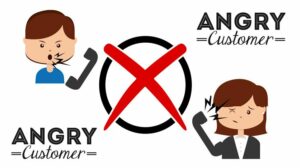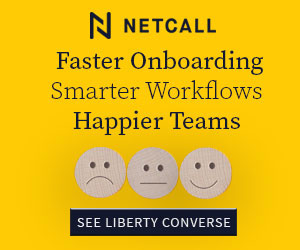Dóra Rapcsák of VCC Live discusses the keys to managing customers and achieving great retention figures.
As customer expectations are steadily growing, the old way of treating all your customers the same might not be the best idea. In fact, over the past decade, most businesses have realized how important it is to categorize clients and treat them accordingly.
What many companies still don’t know, however, is that new customers have completely different expectations than existing customers, and the way you treat them during your first interactions will greatly influence whether they will become your existing customers or will leave you for the competition.
We collected the main differences between new and existing customers to help you offer the customer experience both groups expect.
First Interactions Matter the Most for New Customers
Did you know that new customers complain or ask questions three to five times more than existing customers? If you think about it, it’s not surprising.
As a new customer, you’re trying something new, be it a product or a service. You’re excited about your new purchase and, more importantly, very eager to test the new product in order to decide whether the purchase was worth it.
Starting to use a new product or service (especially in the tech industry) might be confusing, therefore new customers reach out a lot more to customer service teams. During this time, you need to be there for your new customer, ready to help them in case they have any questions.
As creating brand loyalty with new customers takes time, they are more likely to get upset very quickly if they don’t receive the help they are searching for. As a result, they might complain to their acquaintances and fire your customer service team with angry calls and emails.
Digitally Savvy Customers Require Different Approaches
If you’re running your business for a longer time, chances are that you serve different generations of customers. The younger generations discovering your company will most likely be a lot more tech savvy than your existing long-time customers.
Of course, digitally savvy new customers require quite a different approach than existing customers. While your older customers might prefer to be contacted via phone, you can be pretty sure that newer generations, such as Gen Z, will expect you to offer them self-service options.
Your best option here is to provide your customers with multiple channels through which they can reach out to your business. Self-service IVR systems and FAQ pages are greatly popular among younger generations, who prefer to solve their problems on their own instead of dialling a business’s customer service department.
Prepare Special Offers for Your Existing Customers
As I’m sure you know, acquiring a new customer can cost five times more than retaining an existing customer. It is true that new customers require more attention and special care in order to convince them to stay with your company for good, but don’t forget about your existing customers!
In fact, existing customers easily become frustrated when they learn that new customers are offered better deals. As they have been with your business for years, they expect special treatment as well.
Creating special offers exclusively for your existing customers might be great idea as it will make them feel that being a long-time customer does have its privileges, and as a result, they might end up buying more and remaining loyal to your company.
Author: Robyn Coppell
Published On: 12th Oct 2020 - Last modified: 13th Oct 2020
Read more about - Guest Blogs, VCC Live




































